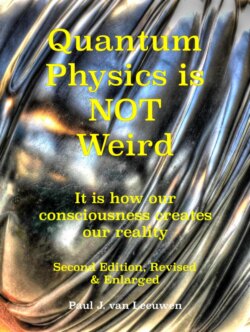Читать книгу Quantum Physics is NOT Weird - Paul J. van Leeuwen - Страница 7
На сайте Литреса книга снята с продажи.
1: Paradoxes – ‘I know how it works’
Оглавление“The opposite of a fact is falsehood, but the opposite of one profound truth may very well be another profound truth.”
Niels Bohr, quantum physicist 1885-1962
What are paradoxes? Paradoxes are apparent contradictions with the emphasis on ‘apparent’. My approach in this book will be that every paradox we encounter is telling us that at least one of our basic assumptions is wrong. Thus, if we encounter a paradox, we are essentially invited to investigate where and how we went wrong. Such an investigation could uncover astounding new views on reality, views we deemed impossible. We just assumed that we knew 'how it is’. Fortunately, quantum physics abounds with interesting paradoxes and counter-intuitive statements such as:
‘Each physical object is simultaneously both a wave and a particle or a composite of elementary particles.’
‘A particle – or a composite of particles – can exist simultaneously in several places – almost everywhere and every time’. Statements like this are often expressed in articles describing new quantum physics experiments and in popular science books on quantum physics.
‘Two or more physical objects with a shared history remain connected, even when they are on opposite sides of the galaxy’. How does this relate to the fundamental statement of the theory of relativity that nothing – including information – can travel faster than the speed of light?
‘According to the interpretation of the Copenhagen school of quantum physicists, Bohr and Heisenberg, an object only exists in a physical sense when measured’. Where was the object prior to the measurement? What is the definition of a measurement? How does a measurement accomplish this feat?
